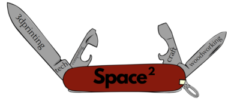With LAMM recently taking on the task of revitalising and preparing laptops for schools in the local area, one of the first things we are doing — before anything else — is securely wiping all data on them. This lengthy process writes random data (using the same techniques as the US’ Department of Defence) across the whole disk, ensuring that nothing can be recovered from storage, and giving donors the piece of mind that none of their data will be accessed.
To accomplish this, we’re using a tool called DBAN which specialises in securely erasing hard disks. Normally, you’d write this to a USB drive, plug it in to the ‘destructee’ computer, and boot off of it, but I didn’t really fancy buying 25 USB sticks for the current stock of laptops in the Space. So, a better solution was needed…
Many Laptops at the Same Time
Thankfully, I’d brought my laptop with me, which I could run a PXE netboot server on – this would allow any devices connected to the same network to boot from anything I liked, as long as I had it on my laptop. I went about setting up a PXE server (configured as a proxyDHCP server pointing to a DBAN boot image on a TFTP server), tested it out, and was ready to roll. This solution meant that no USB drives were needed at all. All that I’d have to do is plug a to-wipe laptop into ethernet, and turn it on. (Perhaps also configure the boot options to use PXE.)
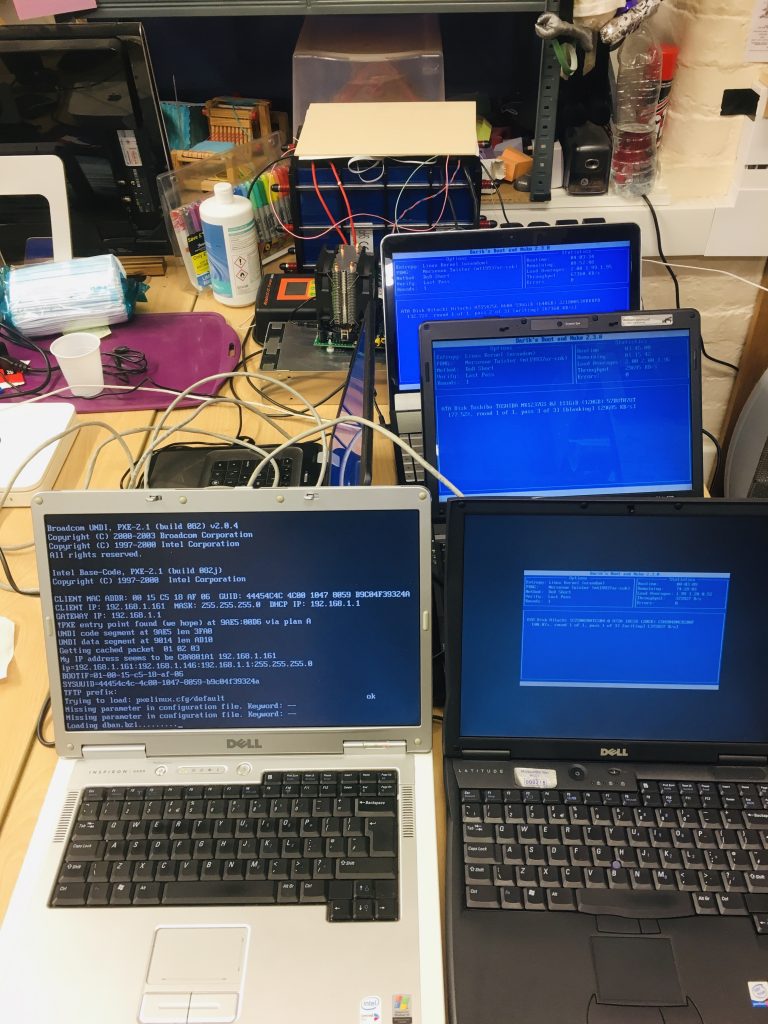
We’d been (and still are being) given quite a range of laptops at this point – everything from this extremely pink laptop:
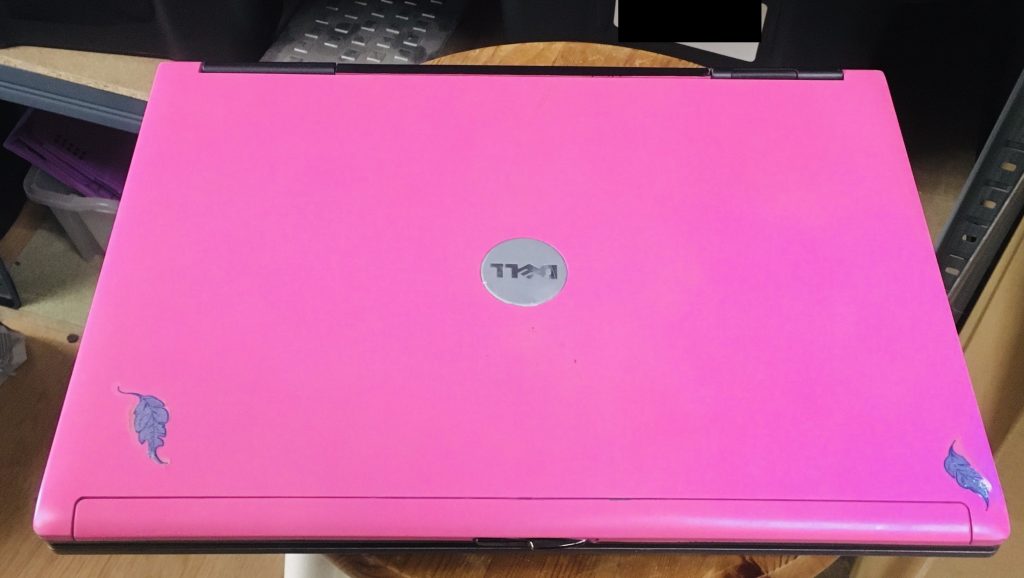
…to this teeny tiny little machine:
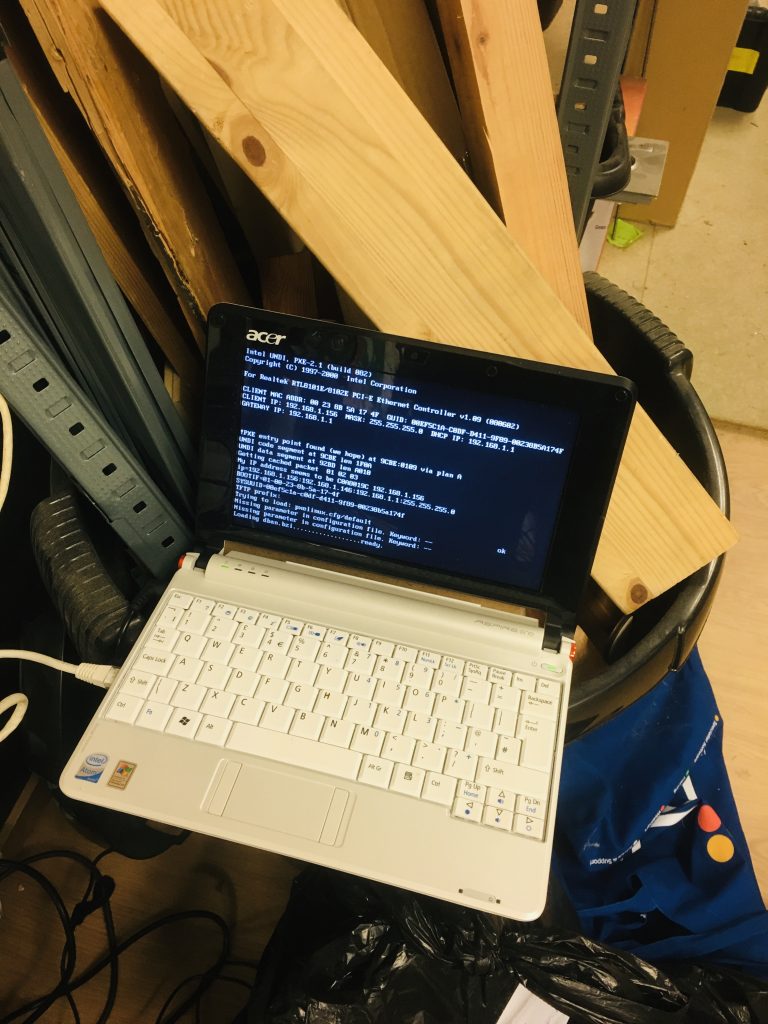
But thanks to how widely adopted PXE is, all the laptops (bar 1, boot password) were as simple as ‘plug in, power on, data gone’. The first stage of a thorough process to get these laptops to in-need school pupils.
The boot server running on the host laptop (and an iPad for music of course):
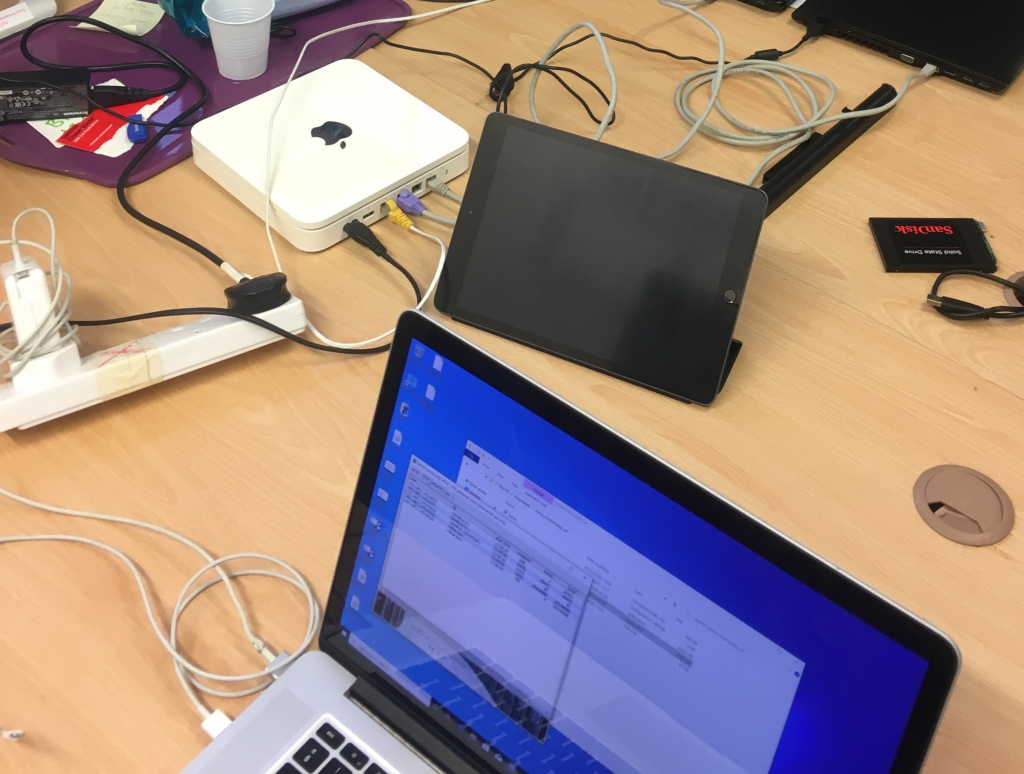
There were laptops everywhere, from on top of the laser cutter:
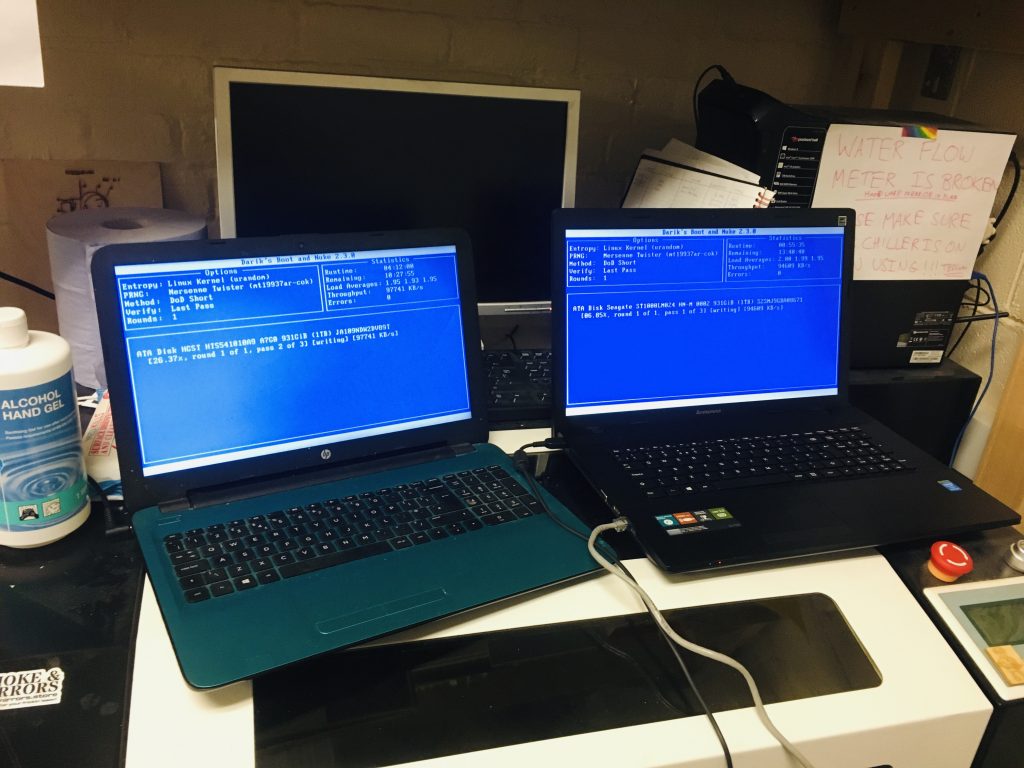
To on top of the fridge:
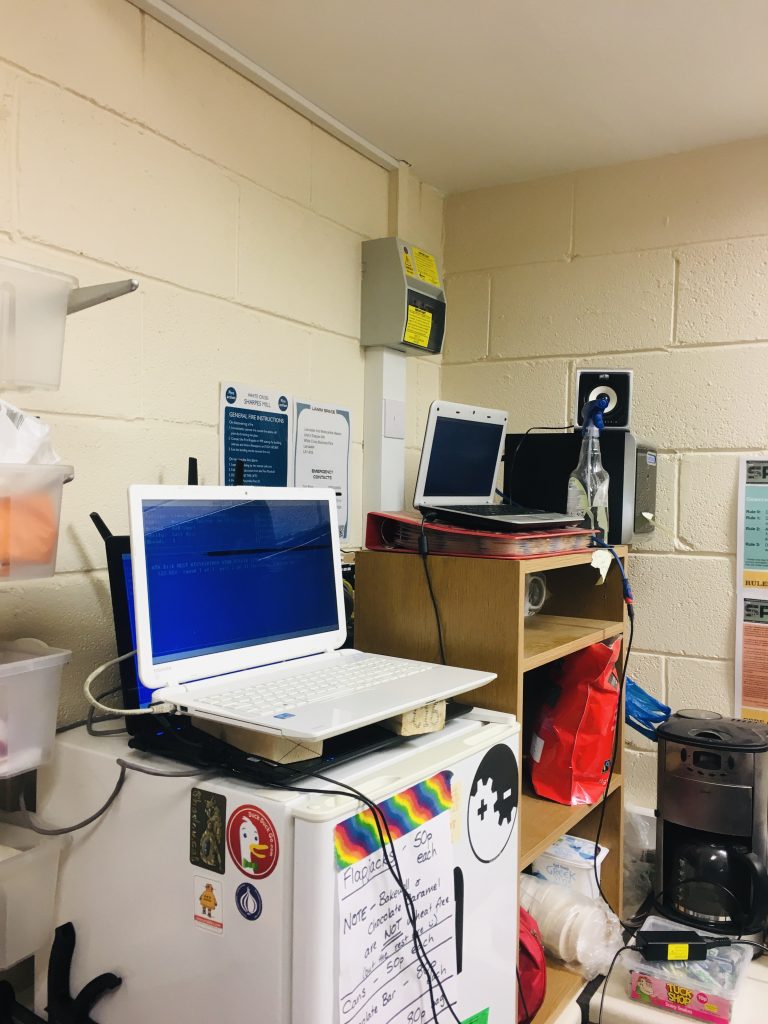
There were even a few that had decided to sit around and have a meeting.
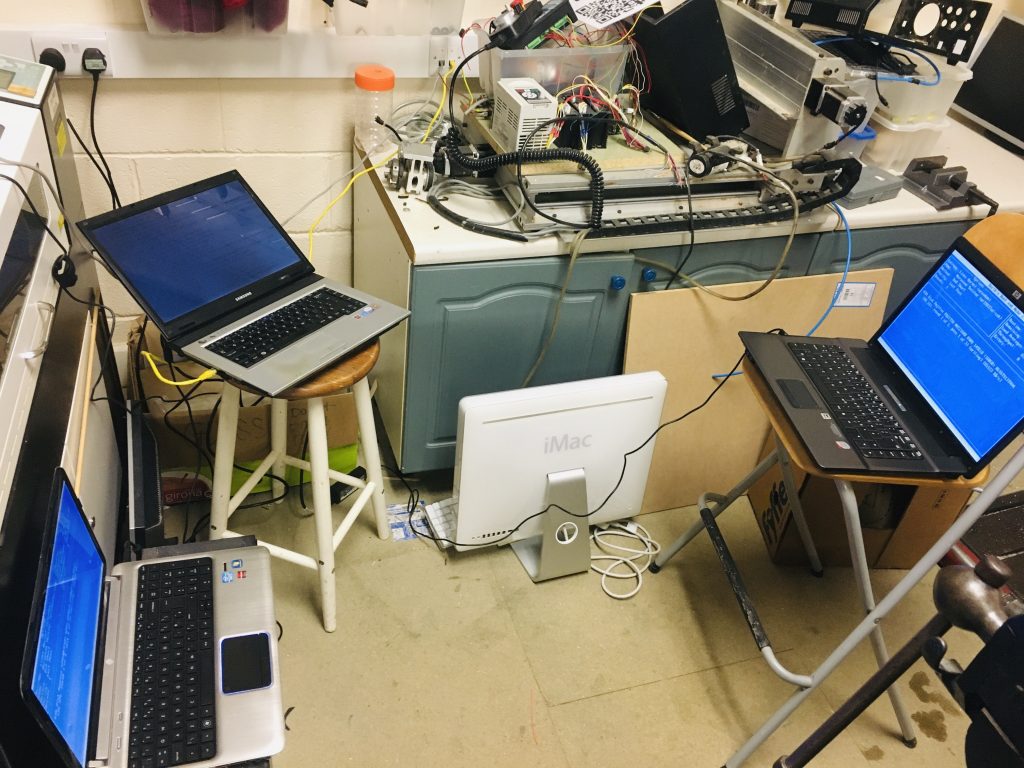
In the end, around 20 laptops were wiped that day. They’re good and ready for the next stage of cleaning up, and then installing an operating system to. Check LAMM for updates!
